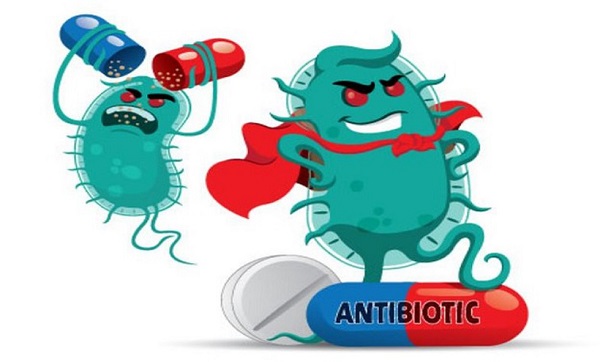
The Africa Centres for Disease Control and Prevention (Africa CDC) has raised alarms over the growing threat of Antimicrobial Resistance (AMR), which is now posing a greater danger to Africa than HIV/AIDS, tuberculosis and malaria combined.
Vulnerable populations, especially children, are at the highest risk, as the silent but deadly crisis continues to worsen across the continent.
Addressing this escalating threat will require between $2 billion and $6 billion annually, according to the Africa CDC, which emphasised the urgent need for investment to mitigate the devastating impact of AMR.
Director-general of the Africa CDC, Dr. Jean Kaseya revealed this during a press conference on Friday. He pointed to a recent African Union report that showed AMR was responsible for 255,000 deaths in Africa in 2019, making it the continent with the highest global burden of AMR.
The Africa CDC is ringing the alarm bells as the global health community grapples with multiple crises, including the Mpox outbreak. Despite these challenges, the threat of AMR is emerging as a critical issue that demands immediate attention.
Kaseya characterised AMR as a “silent threat” that disproportionately affects the continent’s most vulnerable groups, particularly children. He underscored the need for substantial financial investments to fight this crisis, estimating that between $2 billion and $6 billion will be required each year to combat AMR effectively.
“Despite the severity of the situation, current funding levels for AMR are a fraction of what is allocated to fight HIV/AIDS, tuberculosis and malaria, leaving Africa dangerously exposed to the growing threat of drug-resistant infections,” Kaseya said.
He further explained that AMR occurs when microorganisms like bacteria, viruses, fungi, and parasites develop resistance to antimicrobial drugs, rendering them ineffective. “In Africa, AMR has now overtaken these three major diseases in terms of mortality rates,” he added, illustrating the gravity of the situation.
The data is stark. According to the Africa CDC, AMR now accounts for 27.3 deaths per 100,000 people on the continent, the highest rate in the world. Misuse and overuse of antibiotics in healthcare, agriculture and food production are major contributors to the rise of resistance, leading to more difficult-to-treat infections and a rise in illness, disability and death.
Globally, drug-resistant infections claim approximately 700,000 lives each year and projections suggest this figure could skyrocket to 10 million by 2050 if no action is taken. Alarmingly, Africa could account for 4.5 million of those deaths.
“The situation underscores the need for global stakeholders to mobilize resources and commit to developing national action plans, particularly in countries where such frameworks are not yet in place,” Kaseya said, stressing that global collaboration is essential.
A comprehensive, multi-sectoral approach is necessary, Kaseya noted. This includes infection prevention, strengthening healthcare and food systems and making significant investments in diagnostics and laboratory infrastructure. He pointed to a joint study by the Africa CDC and the African Society for Laboratory Medicine, which found that only 1.3 per cent of microbiology labs in 14 African Union member states are equipped to test for key AMR pathogens.
Director of the African Union-Interafrican Bureau for Animal Resources (AU-IBAR), Dr. Huyam Salih also weighed in on the growing AMR crisis. She warned that the issue extends beyond human health, threatening agrifood systems, food security and economies across the continent.
“Without coordinated and sustained efforts, AMR will continue to undermine progress toward the Sustainable Development Goals (SDGs) and the African Union’s Agenda 2063,” Salih stated.
Salih added that the upcoming United Nations High-Level Meeting on AMR would serve as a critical platform for global commitments and coordinated action. “The Africa CDC aims to present a roadmap to combat AMR, calling for global solidarity and investment to avert the catastrophic impact of drug-resistant infections,” she said.
The AMR crisis poses a global threat, but its impact is particularly severe in Africa. Without immediate intervention, experts warn that AMR will escalate, plunging the continent deeper into a public health emergency with worldwide implications.
AMR occurs when microorganisms such as bacteria, viruses, fungi and parasites develop resistance to the drugs once effective against them. This resistance makes infections harder to treat, leading to prolonged illnesses, increased risk of complications and higher mortality rates.
The problem is exacerbated by the misuse and overuse of antimicrobial drugs in healthcare, agriculture and food systems, which fuels the development of resistance. In Nigeria alone, 64,500 deaths are directly attributable to AMR, with another 263,400 deaths associated with drug-resistant infections.
These alarming statistics highlight the need for improved surveillance, stricter controls on antibiotic use, and better hygiene practices across both human and animal health sectors. Experts have pointed out that the misuse of antibiotics in hospitals, farms and communities continues to drive resistance in Nigeria and across Africa.
The Nigeria Centre for Disease Control (NCDC) is taking steps to address this growing threat. Through the One Health approach, the NCDC is collaborating with stakeholders in human health, agriculture and environmental sectors to raise awareness, enhance surveillance and promote the responsible use of antimicrobial drugs.
Without sustained and coordinated efforts, however, the fight against AMR will be lost, with devastating consequences for public health, economies and food security across Africa.

